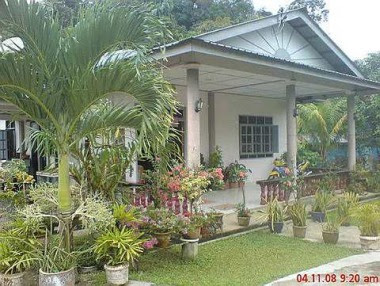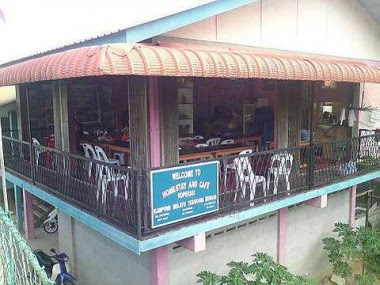Homestay programme in Kampung Melayu Tebakang, Sarawak
Refreshing rural experience
By Reen Reira
Wednesday May 4, 2011
A place where rivers are clean, air is fresh and the greens are greener.
10 families have set up a homestay programme in Kampung Melayu Tebakang, Sarawak, to provide visitors a feel of the traditional Malay village.
It is the latest eco-tourism destination managed by the state’s Urban Development and Tourism Ministry.
It offers an excellent opportunity to experience the exotic culture, warmth and hospitality of the villagers along with nature at its best.
The village has existed since the beginning of the 18th century after its initiation by a merchant and scholar named Haji Laer, who came from Kampung Bintangor in Sarawak.
The name Tebakang is from Sungai Tebakang which flows by the village.
During a war between the Netherlands and Indonesia, a small group of Melayu Sambas migrated to the village and helped its population to increase.
In the 1920s, when Sarawak was under Rajah Brooke’s rule, a representative from Kampung Melayu Tebakang known as a native officer was appointed to manage the Ulu Sadong area.
While native officer Abang Samsudin Abang Matusin was in charge, a mosque on a hill adjacent to the village was transferred to the village.
Sekolah Atap was then established in the village and was known as the Combined School. It is now known as Sekolah Kebangsaan Tebakang.
The homestay was started in 2009 with 10 operators.
Kampung Melayu Tebakang chairman Pauziah Mohd Yussup said that nine more people had passed a basic homestay course and would join in the programme.
The two-day, one-night package costs RM130 and includes basic facilities and three meals per day.
Traditional games, rafting, picnics, barbecues and other activities are also offered.
Pauziah said the Ministry of Tourism had allocated RM200,000 to build a concrete jetty and a tourist information centre.
"We hope the toilet and bathroom facilities of the houses in the programme will be upgraded.
"We also hope that the ministry will accept our proposal to build a multi-purpose hall in the village, which has been growing from year to year.
"The upgrading can attract more people, and this can help the state and country to earn tourist dollar," said Pauziah.
Kampung Melayu Tebakang is a unique Malay village that has a clean, green environment and not exposed to pollution.
Location of Kampung Melayu Tebakang
It is located in Serian District, about 80km from Kuching, and takes only a one hour to reach from the city.
It has amazing natural beauty and offers unique cultural activities.
The population of 2,000 is predominantly Bidayuh and Malay.
The village is divided by the Sadong River. The settlement on the bank reached by the main road is named Kampung Bidayuh Tebakang while the one on the other side of the river is Kampung Melayu Tebakang.
In 1929, during the era of Charles Vyner Brooke, Fort Tebakang was built as an administrative centre near the village.
The Tebakang area has some striking limestone hills with vertical cliffs.
While the older generations were mostly farmers, the village youths now work in government departments and the private sector.
Farming and the planting of trees and vegetables provides resources for the village.
Among the crops are pepper, rubber, cocoa, rambutan and durian.
There is also the cultivation of padi huma and normal padi.
Some villagers raise fish on a small scale while others raise it commercially in freshwater ponds.
Various types of fish are raised, one of which is the red tilapia.
The village has infrastructure such as sundry shops, school and mosque.
The accommodation facilities for the homestay comprise clean rooms with fans, common bathrooms and toilets, electricity and basic amenities.
Upon arrival, guests are welcomed with the beat of kompang played by the locals.
Among the activities are rafting or kayaking down the Kayan River, longboat river safari, fishing, trekking, farm activities, picnic in Kerangan and making local delicacies such as kuih jala, ragi and ayam pansuh.
There is also a package for visitors to see a traditional Malay wedding and dances for visitors to participate in.
Those interested in arts and crafts may see how furniture is made and carved with motifs.
Pauziah said that many students from abroad and local universities had participated in the homestay.
"Last year, 35 students from UiTM in Shah Alam, Selangor, stayed in the village under the Program Explorasi Bumi Kenyalang while 120 students from Unimas joined in under the Program Rakan Muda Wawasan Desa," said Pauziah.
Those interested can experience what life is like in a Malay community.
The villagers are ever ready to welcome and show visitors their way of life, which has been practised for a very long time.
For more information on the homestay programme in Kampung Melayu Tebakang, Sarawak, call Pauziah at 082-874 263 or 019-858 2078 or send email to pauziahhail@yahoo.com











0 comments:
Post a Comment